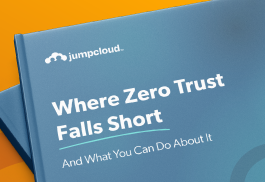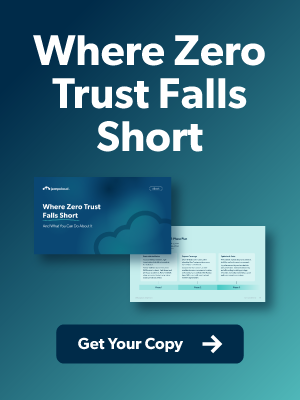Traditional security models have protected organizations for years. They now face advanced threats that can slip past perimeter defenses. Zero Trust security takes a new approach. It sees every access attempt as potentially harmful, regardless of its source. This shift to data-centric protection isn’t just a tech upgrade; it changes how we secure information in the cloud.
IT professionals must understand these differences. They need to know how each model protects data, the methods used, and where traditional methods fall short. This analysis looks at key differences between traditional security and Zero Trust, focusing on their mechanisms and assumptions.
Definition and Core Concepts
Traditional Security focuses on the network. It relies on strong perimeter defenses. Firewalls and intrusion prevention systems (IPS) block untrusted external networks from trusted internal ones. Inside, users and devices often receive implicit trust and wide access.
Zero Trust changes this approach. It requires strict verification for every user, device, and application seeking access. It treats all access requests—inside or outside the network—with equal scrutiny.
The network perimeter is the line that separates an organization’s internal network from external threats. Traditional security depends on this boundary. In contrast, Zero Trust eliminates it as a security measure.
Data-centric security aims to protect the data itself, not just the infrastructure or devices. This approach is key to Zero Trust. Here, data classification and contextual access policies direct security controls.
The Core Philosophy of Access
Traditional Approach: The Castle-and-Moat Model
Traditional security resembles a medieval castle with a moat. The moat keeps attackers out, while trust exists within. This model sees breaching the perimeter as the main challenge for attackers.
Once inside, users often access many systems without checks. This creates blind spots where insider threats can cause serious damage before detection. The castle-and-moat model also fails to address lateral movement. Attackers inside can move freely, escalate privileges, and access sensitive data.
Zero Trust Approach: The Constant Verification Model
Zero Trust works on a different idea: no network is trusted. Every access attempt, no matter where it comes from, is examined. A user at their desk faces the same checks as someone in a coffee shop.
Each access request is seen as a new, possibly harmful action. Ongoing identity verification, device checks, and risk assessments are key. Access decisions rely on factors like user identity, device health, location, requested resources, and behavior.
Zero Trust restricts access based on real-time evaluations. It does not allow broad access based on initial checks. This greatly cuts down the risk from compromised credentials.
Technical Mechanisms for Data Protection
Traditional Security Mechanisms
Perimeter-based Controls are key to traditional security. Firewalls block unauthorized connections based on IP addresses and protocols. IPS analyze traffic patterns to stop known attacks.
These controls block outside threats well. However, they struggle with internal threats or those that use valid channels.
Network Segmentation divides the internal network into separate areas. This limits the impact of security incidents. Traditional segmentation often creates strong trust in each area. This limits control over individual workloads.
Zero Trust Security Mechanisms
Microsegmentation enhances network security by creating unique zones for specific workloads or applications. Each microsegment has its own access rules.
This limits lateral movement. If attackers breach one system, they can’t easily reach others. Moving between microsegments requires extra checks.
Identity and Access Management (IAM) is vital in Zero Trust. Multi-factor authentication (MFA) confirms user identities through several methods. Dynamic access policies adjust permissions based on real-time checks. This includes factors like unusual login times or suspicious activity.
Data Encryption is key in Zero Trust designs. It safeguards data in transit and at rest. Even if attackers get to encrypted data, they can’t read it without the decryption keys.
The Approach to Data Itself
Traditional Data Security
Traditional models aim to secure the infrastructure that hosts data. Servers get hardening, access controls are set, and physical security is applied. The idea is that securing the container keeps its contents safe.
This works well when data stays in fixed locations. But it struggles in today’s environments where data moves often. Attackers can easily find data in readable formats with little protection.
These models also apply uniform security policies. Sensitive financial records might get the same protection as general communications. This can lead to over-protection or under-protection.
Zero Trust Data Security
Zero Trust views data as an asset that needs protection, no matter where it is. It starts with data discovery and classification to find sensitive information and categorize it by sensitivity and business impact.
Data Discovery and Classification creates lists of data assets. Automated tools scan storage for sensitive info. Classification systems assign risk levels and handling needs. Contextual Access Policies make decisions based on various factors, not just user credentials. These policies look at the user’s identity, device security, location, and the sensitivity of the requested data.
For example, a finance manager can access payroll data from a corporate device during work hours. However, they may need extra approval to access it from a personal device or after hours. The policy reviews the full context instead of making simple trust decisions.
Advantages and Trade-offs
Zero Trust Advantages
Zero Trust offers superior protection against sophisticated attacks that bypass traditional defenses. Insider threats go through the same strict checks as outside attackers. This helps lower the risk of unauthorized access.
This framework adapts well to modern distributed environments. Remote workers and cloud services get steady security. This is key for hybrid work models and cloud-first strategies.
Zero Trust Trade-offs
Implementation complexity is the main challenge. Zero Trust requires major changes to infrastructure, policies, and procedures. Organizations must inventory and classify their data. They need to redesign network architectures and retrain staff on new security practices.
Costs extend beyond just setup. Zero Trust needs advanced security tools, staff training, and regular policy management. Organizations must balance security and user productivity. This balance helps avoid friction that can lead to workarounds.
The transition period has challenges. Organizations can’t just switch to Zero Trust security. They need to manage hybrid environments with both methods. This creates complexity and can lead to security gaps.
Making the Strategic Choice
Switching to Zero Trust security isn’t just a tech upgrade. It shifts how organizations view data protection. Traditional models worked when network perimeters were clear and data was static. Today’s distributed computing needs a better approach.
Zero Trust provides stronger protection for organizations. It suits those facing complex threats and strict compliance demands. It focuses on data protection, aligning with business needs. Here, the value of data often exceeds that of infrastructure.
Success requires careful planning, enough resources, and solid executive support. Organizations should begin with pilot projects in high-risk areas. They can then expand Zero Trust principles throughout their environment. Investing time and resources lowers breach risks. It also simplifies compliance and boosts security in a risky threat landscape.






